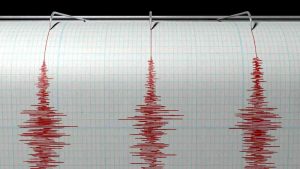
Scientists are working hard to determine the how, why and when of earthquakes, but getting answers is a complex team effort, says a Victoria University of Wellington geophysicist.
It’s 30 years since John Townend recalls first experiencing a big earthquake—the magnitude 6.5 Edgecumbe earthquake, which struck in March 1987 less than 100 kilometres from his high school in Rotorua.
The Professor of Geophysics and Head of Victoria’s School of Geography, Environment and Earth Sciences has been studying the physics of earthquakes ever since.
The last few years have seen Professor Townend called on many times for his expertise, most recently following the magnitude 7.8 Kaikoura earthquake in November 2016 when he provided expert commentary in the media explaining what had happened and what was likely to come.
As he will discuss in his upcoming inaugural professorial lecture, recent observations of large and small earthquakes in New Zealand and worldwide have hugely expanded geoscientific knowledge.
“The basic problem is that the big earthquakes we’re concerned about as a society and which we most want to understand occur infrequently, whereas the little ones don’t have much effect but occur often enough to test and refine our ideas,” says Professor Townend.
“To really understand how the earthquake machine operates, we need to combine measurements and theory spanning many orders of magnitude. Working out what is happening is a community effort—many different types of observation and scientific expertise are required.”
In his lecture, Professor Townend will discuss what faults look like at different scales, and what we do and don’t know about how earthquakes are generated and how they interact.
“Projects like the Deep Fault Drilling Project, which drilled nearly 900 metres into the South Island’s Alpine Fault, are helping us understand the health of a major fault—the temperatures, pressures, and stresses it’s subjected to—before an expected large earthquake occurs,” he says.
The Alpine Fault produces earthquakes of around magnitude 8 approximately every 300 years and last ruptured in 1717 AD, says Professor Townend, so understanding what processes control the rupture and reloading of the fault is an urgent scientific and societal challenge.
Meanwhile, data collected during and after the Kaikoura earthquake reveal to seismologists just how finely balanced some faults are.
“The Kaikoura earthquake triggered earthquakes and deep slow slip extending hundreds of kilometres along the Hikurangi subduction zone, below the east coast of the North Island. It’s important that we improve our understanding of what factors make different faults susceptible to slip and what factors control the sizes of the earthquakes that result,” says Professor Townend.
“In a country as geologically young and complex as Aotearoa, earthquakes provide a regular and sometimes devastating reminder that the Earth is in motion.”
Note: The above post is reprinted from materials provided by Victoria University.










